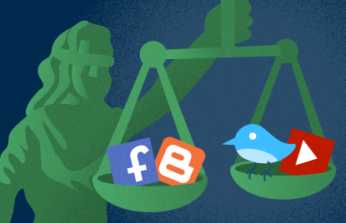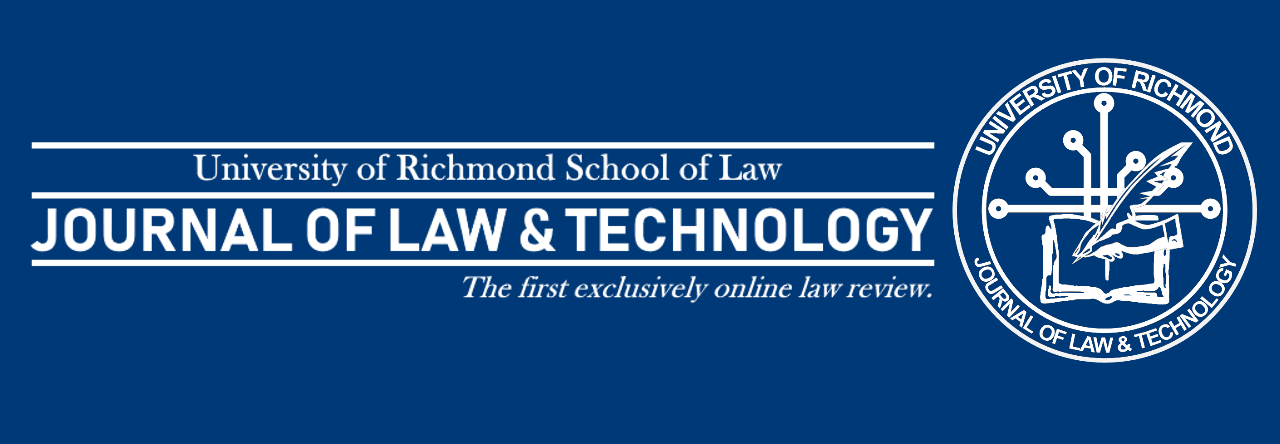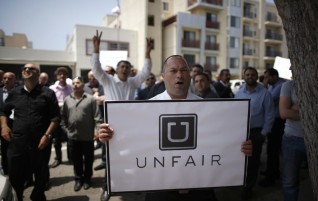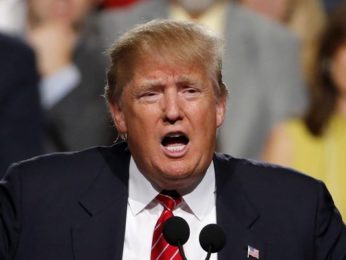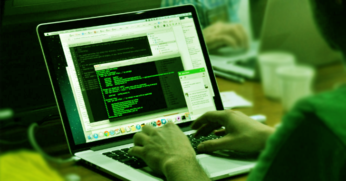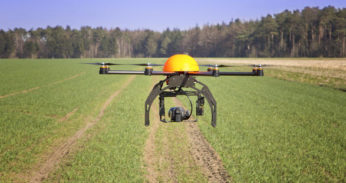
By: Abby Johansen,
Who owns the rights to tattooed skin? This summer the United States District Court for the Southern District of New York was confronted with this question, but, under circumstances that had never been addressed by a court before. The suit asked not only who owns the rights over a tattoo, but who owns the rights over a tattoo when it is featured in a popular video game? This question still looms unanswered, as the District Court relied on a statutory ban from recovery when deciding to dismiss the case.
In February 1, 2016, Solid Oakes Sketches filed a complaint against 2K Games and Take-Two Interactive Software, Inc. for alleged infringement over the popular video game, NBA 2K16, for featuring eight tattoos on their digital depictions of professional basketball players. Solid Oakes entered into copyright license agreements with the individual artists of the eight tattoos in question.[1] The tattoos were based off of actual tattoos on NBA stars including: Lebron James, Kobe Bryant, Eric Bledsoe, DeAndre Jordan, and Kenyon Martin.[2] Solid Oaks registered copyrights over the tattoos in June and July of 2015.[3] Before filing their suit, Solid Oaks Sketches attempted to notify and meet with 2K Games to discuss the alleged infringement with the hope of entering into an agreement giving 2K Games permission to use the tattoos in the video game for a price of approximately one million dollars.[4] 2K Games refused such an agreement and continued to produce the video games, with better graphics, more recognizable characters, and featured the newly copyrighted tattoos in a much individualized manner.[5] Take-Two Software, Inc., claims that NBA 2K16 sold more than four million copies within the first week of the game’s release in September 2015.[6]
Copyright law protects original works of authorship that are fixed in a tangible medium of expression[7]. It is easy to claim that tattoos, at least, require some amount of originality, as copyright law merely requires a minimal level of creativity to be deemed as original.[8] But, challenges arise with the ‘fixed in a tangible medium of expression’ requirement. Specifically, whether or not a person’s skin is a tangible medium of expression.[9] Generally, an original tattoo fixed on an individual’s skin is considered to be copyrightable material, and, as a result, entitled to the Copyright Act’s enumerated exclusive rights.[10] The Copyright Act grants copyright owners the exclusive rights to reproduce, prepare derivative works, distribute copies, perform the work publicly, and display the work publicly.[11]
When tattoos, professional athletes, and media come together all of the exclusive rights associated with copyrights are at risk. Traditionally, major tattoo copyright suits involving celebrities or professional athletes have ended in confidential out of court settlements. In 1998, a tattoo artist in Oregon sued Nike and Rasheed Wallace, a NBA basketball player, over Wallace’s involvement in a Nike advertisement.[12] The ad featured two of Wallace’s tattoos and he explained the meaning and creative process behind each one.[13] The artist claimed that Nike and Wallace had infringed upon his copyrights without his permission and without even notifying him of the advertisement.[14] The case, Reed v. Nike, was dismissed and settle outside of court approximately eight month’s after it was filed.[15]
Another noteworthy, and perhaps the most well know, case is Whitmill v. Warner Brothers Entertainment, Inc., which focuses on Mike Tyson’s signature face tattoo. The issue arose after Warner Brothers began marketing for the release of their new film The Hangover: Part II, which featured a reproduction of Tyson’s face tattoo in both the trailer and the official movie poster.[16] The tattoo artist claimed that “both the trailer and the poster constituted unauthorized copying, distributing, and publicly displaying of the copyrighted work, and the version of the tattoo used in the film qualified as an unauthorized derivative work.”[17] In his complaint, the tattoo artist sought injunctive and monetary relief for the alleged infringement. Much like the prior Nike case, this case settled outside of court as well.
The Nike case is often considered to be the first case to allege copyright infringement over a tattoo and many worried that it would cause a mass influx of similar cases.[18] But, this proved not to be true, as there have only been a few other notable copyright infringement suits over tattoos and they have ended in confidential out of court settlements. Most tattoo artists expect for their rights to be infringed based on the individual they are tattooing, they understand that their tattoo will be on TV or in a picture, but when the tattoo is specifically featured or commercialized, the incentive to sue increases. Although their rights may have been infringed, artists generally agree that the process of going to court and litigating over the copyrights associated with a tattoo is not worth the associated costs of litigation.[19] This sentiment is strengthened by the fact that there is a lack of actual precedent on this specific issue because the limited amount of prior cases over copyrights of tattoos have all settled out of court.[20]
The question over individual tattoos featured in video games potentially presents a new incentive for artists to litigate over the copyrights to their works. Professional athletes have their own individual rights of publicity, for instance, where they choose to go to make appearances or who they allow to use their likeness (magazines, advertisements, etc.).[21] Similarly, tattoo artists deserve rights over their original works of authorship fixed on the athletes’ body.[22] Also, the video game industry should not be improperly held back from improving and enhancing their technology. As increased realism in video games leads to increased profits and popularity.[23] The intersection and competition between the rights of artists, athletes, and video game developers creates major issues for copyright law, as athletes continue to consistently grab public attention, video games improve their graphics, and tattoos remain to be original and recognizable.
It is important to note that the artists who licensed their tattoo works to Solid Oaks Sketches are not attempting to control the specific athletes featured in the NBA 2K16 video game, they are claiming rights over the commercialization of their works.[24] It would be unreasonable to suggest that professional athletes should have to cover up their tattoos to prevent them from being broadcasted or captured in a picture.[25] Similarly it would be against the nature of Intellectual Property law to limit the technological development of video games. But, an artist’s exclusive copyrights are severely impacted in this scenario. For instance, an artist’s right to reproduce is affected by the digital reproduction of their tattoo featured in the game.[26] On the same note, the digital recreation of the tattoo could be considered a derivative work in violation of an artist’s right to prepare derivative works.[27] By selling the video game, like in the Solid Oak case by the millions in just one week, an artist’s right to distribute is impacted.[28] And, perhaps the most controversial, when the athlete appears in public with the tattoo visible, he may violate an artist’s right to publicly display their work.[29] There is a serious issue over balancing rights at play here, and this question is exacerbated by the influence of large scale profit potential, fame, and the constant improvement and development of technology.
One potential defense for the video game industry is an implied license. An implied license may arise when there is no written agreement between the copyright owner and the infringer, it would give the infringer some rights over a tattoo, but these rights would be limited the extent of what the tattoo artist would have agreed to if there was a formal written agreement in place.[30] It has been said that an implied license defense would be weak when applied to the Solid Oaks Sketches case, because “while this defense seems solid in protecting the NBA from infringement suits every time Lebron appears on television for games, it is much weaker when LeBron’s lion head [tattoo] appears on its own, independent from his body, and even weaker still when this unique tattoo appears on another NBA star’s avatar.”[31] In addition, the tattoo artists knew that they were tattooing professional athletes, who are featured in many types of pictures and videos, and because of this, their tattoos could be included and reproduced in various types of media and technology as the tattoo is physically a part of their bodies.[32] The potential downfall of an implied license defense for video game developers is that an implied license is designed to protect noncommercial displays of an author’s work, which is clearly not the case here.[33]
The Solid Oaks Sketches case was dismissed because the District Court held that the alleged infringement occurred before the tattoos were actually registered with the Copyright Office.[34] The tattoos were registered in the summer of 2015, but they were previously featured in earlier versions of the NBA 2K game (released in 2013 and 2014). So, the initial alleged infringement occurred years before the tattoos were registered and the suit was not file in time to be considered.[35] Despite the recent dismissal, Solid Oak Sketches can still continue to attempt to recover actual damages from Take-Two Software, Inc. (the other defendant in their initial suit) from their incorporation into the NBA 2K16 game that was released in 2015. [36] As a result, the question of who owns the copyrights over tattoos featured in video games remains unanswered by courts and the profit potential for all potential parties involved continues to rise.
[1] See Solid Oak Sketches, LLC v. 2K Games, Inc., No. 16CV724-LTS, 2016 U.S. Dist. LEXIS 101119, at *3 (S.D.N.Y. Aug. 2, 2016).
[2] See Johnathan Stempel, NBA 2K Videogame Maker Wins Dismissal of Big Tattoo Damages Claim, Reuters (Aug. 2, 2016), http://www.reuters.com/article/us-take-two-interac-lawsuit-nba-tattoos-idUSKCN10D28X.
[3] See Solid Oak, 2016 U.S. Dist. LEXIS 101119, at 3.
[4] See Bill Donahue, Novel Suit over Tattoos in Video Games Likely to Fade, Law360 (Feb. 8, 2016), http://www.law360.com/articles/755607/novel-suit-over-tattoos-in-video-games-likely-to-fade.
[5] See Solid Oak, 2016 U.S. Dist. LEXIS 101119, at *3-4.
[6] See Stempel, supra note 2.
[7] See 17 U.S.C.S. § 102(a) (LEXIS through Pub. L. No. 114-244).
[8] See Jennifer Commander, The Player, the Video Game, and the Tattoo Artist: Who Has the Most Skin in the Game?, 72 Wash. & lee L. Rev. 1947, 1954 (2015).
[9] See Id.
[10] See Id.
[11] See 17 U.S.C.S. § 106 (LEXIS through Pub. L. No. 114-244).
[12] See Commander, supra note 8, at 1957.
[13] See id at 1958.
[14] See id.
[15] See id at 1959.
[16] See id at 1961.
[17] See Commander, supra note 8, at 1961.
[18] See id at 1960.
[19] See id at 1964.
[20] See id at 1965.
[21] See id at 1977.
[22] See Commander, supra note 8, at 1978.
[23] See id at 1978.
[24] See Samantha Elie, Whose Tattoos? Body Art and Copyright (Part I), Center for Art Law (Mar. 16, 2016), https://itsartlaw.com/2016/03/16/whose-tattoos-tattoos-and-copyright/comment-page-1/.
[25] See id.
[26] See Commander, supra note 8, at 1955.
[27] See id at 1955.
[28] See id.
[29] See id at 1956.
[30] See Elie, supra note 24.
[31] See id.
[32] See Donahue, supra note 4.
[33] See Commander, supra note 8, at 1975.
[34] See Joyce Hanson, Tattoo Co. Loses Some Damages Claims Over ‘NBA 2K’ Games, Law360 (Aug. 2, 2016), https://www.law360.com/articles/824247/tattoo-co-loses-some-damages-claims-over-nba-2k-games?article_related_content=1.
[35] See Solid Oak Sketches, LLC v. 2K Games, Inc., No. 16CV724-LTS, 2016 U.S. Dist. LEXIS 101119, at *6 (S.D.N.Y. Aug. 2, 2016).
[36] See Hanson, supra note 34.
Photo Source:
http://clutchpoints.com/wp-content/uploads/2016/02/CaN4AjfWAAEYgLR.jpg
